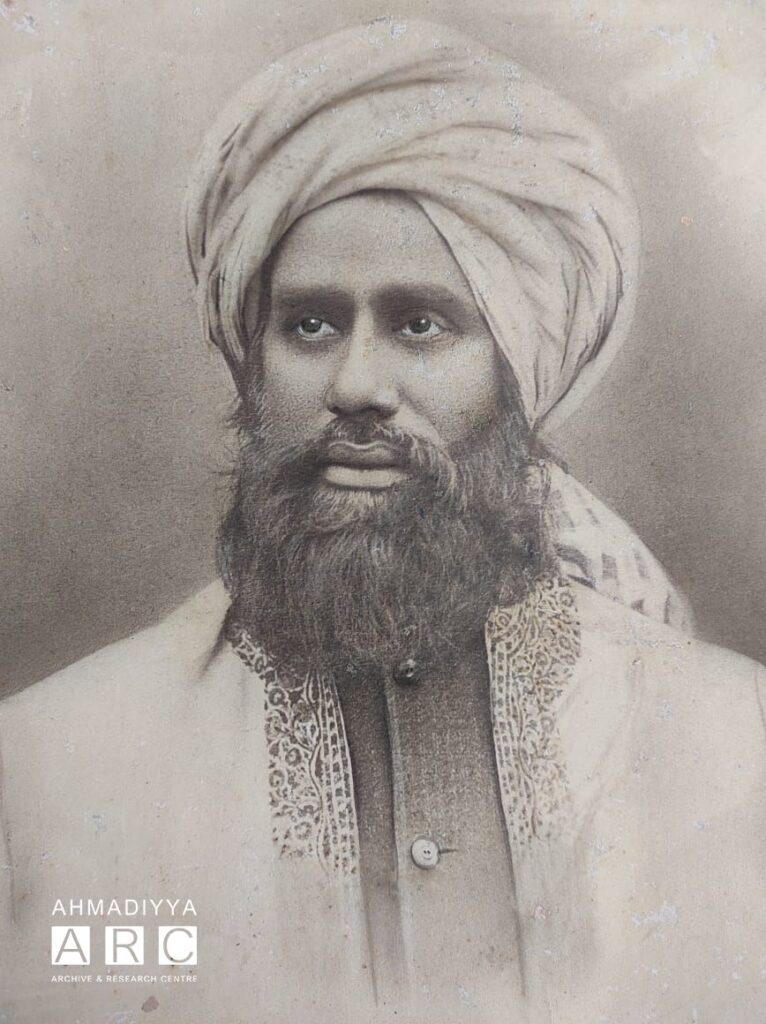During his Jalsa UK address, delivered on 29 July 2023, Hazrat Khalifatul Masih Vaa mentioned the research carried out by Ahmadiyya Archive & Research Centre (AARC) into the early life of Hazrat Hakeem Noor-ud-Din, Khalifatul Masih Ira. We asked Asif M Basit Sahib, the curator at AARC, to gain insights and understand the genesis of this research project, and to uncover the intriguing details and findings he had come across during the course of the study.
Asif M Basit, Curator, Ahmadiyya Archive & Research Centre

It was winter in 2021 when it first occurred to me that there was very little information on the pre-Qadian life of Hazrat Khalifatul Masih Ira. I mentioned this to Hazrat Khalifatul Masih Vaa, who encouraged me to start working on finding as much as we can possibly find. The way he said it showed that my suggestion had his full approval and blessing and I wasted no time in embarking on the project.
After Hazrat Hakeem Noor-ud-Dinra accepted Ahmadiyyat at the hand of the Promised Messiahas, and subsequently moved to Qadian, most of his activities got recorded in the periodicals of the Jamaat. And, later on, when he became Khalifa, every word he uttered got recorded in Jamaat’s newspapers and periodicals.
But before the Qadian phase of his life, little was known which, I think, was due to his humility that he didn’t mention the magnificent life he had led.
My curiosity had emanated from the fact that he was a great scholar and, later, the Royal Physician to the Maharaja of Kashmir; and hence, there must be a lot about his stature that we are missing out on.
While going through the available Jamaat literature, I found that he had once written an autobiographical account that a periodical, Hakim Haziq, had published.
All other material, including Mirqat al-Yaqin and Hayat-e-Nur, was derived and expanded from this account. Hence, despite historians and biographers trying to elaborate certain aspects, his spiritual and intellectual prowess remained veiled behind his humility.
I set out in search of any material that I could lay my hands on to find whatever I could about the pre-Qadian life of this great disciple of the Messiahas of this age.
Before I move on, I must appreciate the efforts of Jamaat’s historians in putting together detailed biographical accounts of the great man – more so for they worked as a stepping stone towards the more inconspicuous phases of his life.
As I delved deeper into the project, I was pleasantly amazed to find that a sizeable number of books, written in the East and West both, carried his mention in the leading Yunani Tabibs (doctors of Eastern medicine) of his time.
Other publications, again from India and the Western world, carried mention of him as a prominent scholar of Islam.
Having read in Jamaat publications how widely he had travelled not only across the length and breadth of the Indian subcontinent but also abroad to Mecca and Medina, I was always left intrigued why he was going from place to place when there were esteemed centres of Islamic learning across the subcontinent where he could have settled and studied in peace.
I got the chance to see how highly esteemed these centres of learning were and how cordially he was invited by some of them to join them and also to stay and take it up as a career. He always refused. For instance, Bhopal was a great centre of learning. The Begum of Bhopal and her officials were both fond of Hazrat Hakeem Maulvi Noor-ud-Dinra, respected his knowledge and piety, yet he decided to move on to some other centre.
Kashmir was yet another venture of similar nature but the nature of his job provided him several years to remain in the same place.
He served two Maharajas during his stay but was never overawed by the majesty of their courts and palaces. His aversion to worldly lusts and conspiracies kept him reluctant to feel fully a part of it all. The only one factor that kept him there was firstly the opportunity to teach Islam to people of other faiths, or the handsome income that came with the royal employment – only to send most of it to his holy master, the Promised Messiahas for the purpose of propagation of Islam.
The most interesting part of my quest came when I found myself stuck at a dead-end – when I realised that more material could be retrieved from the state archives in Jammu.
I cannot but help crediting the breakthrough that came about in just a few days to the prayers and blessings of Huzooraa. I picked up the phone and dialled a number that I had come across on the internet. Getting through to government officials in India and Pakistan is not an easy nut to crack.
But, by the grace of Allah, the first number I dialled and the first person who picked up the phone proved no less than an angel all along – until I had obtained what I required. I would think in sheer amazement when some of their staff would tell me how they had spent all afternoon – or a whole day on some occasions – searching for what I had requested.
To conclude this piece, I request the actual article be read which can be found through the links below:
Part I: www.alhakam.org/formative-years-of-hazrat-hakim-maulvi-nuruddin-part-i/
Part II: www.alhakam.org/formative-years-of-hazrat-hakim-maulvi-nuruddin-part-ii/

